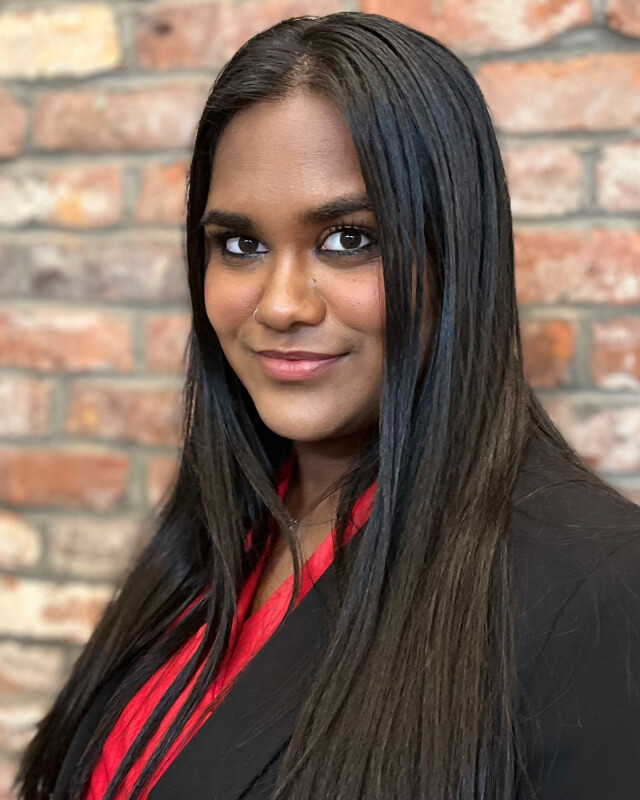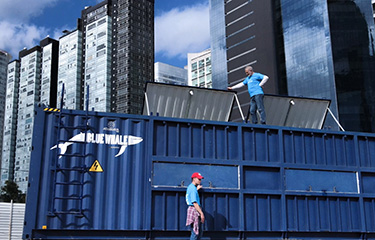Atarraya has created a solution that can turn practically any location into a shrimp farm, and practically anyone into a shrimp farmer.
Its invention, the Shrimpbox, is essentially a shipping container that has been converted into a small commercial shrimp farm. The Shrimpbox requires minimal water exchange and contains an automated feeding system and biofloc waste-removal system, minimizing the work involved in farming shrimp in the unit while eliminating the need for using antibiotics and chemicals. It also relies on artificial intelligence that can remotely monitor water quality and regulate water temperature and oxygenation.
“Shrimpbox is more than a cargo container. It is a technological system designed to create life," Atarraya Founder and CEO Daniel Russek said. "With automated systems and software capable of learning and making decisions, this piece of engineering has the potential to help aquaculture take its biggest step forward in decades.”
Atarraya, a start-up tech company based in Mexico City, Mexico, teamed up with Condesa, Mexico-based AguaBlanca Seafoods to build, test, and operate them. Two initial prototypes were created in 2021, and following initial success, Atarraya has now expanded its collection of Shrimpbox units to five, with work underway to create 17 new units by December 2022. The company's first farm, based in Indianapolis, Indiana, U.S.A. will open for training and demonstration later this year in partnership with the Indiana Economic Development Corporation.
“Ninety-five percent of the shrimp consumed in the United States is imported. The quality is often poor, and the shrimp can’t be sustainably traced," Atarraya Marketing Manager Mariana Madrigal told SeafoodSource. "A Shrimpbox farm – which integrates the best elements of biotechnology, software, and hardware – is a system of containers that have the capacity to produce shrimp."
The company has raised more than USD 10 million (EUR 10 million) since it was founded, including a recent USD 3.9 million (EUR 3.9 million) Series A investment, according to TechCrunch.
“This technology is basically everything in a hyper-modular solution,” Russek said. “The idea is that we can manufacture Shrimpbox anywhere in the world that is ready to use with plug-and-play and can be moved around efficiently using an intermodal transportation system.”
Russek said the innovation that has attracted the most investor attention to Shrimpbox is its automation.
“The degree of automation that will decrease personnel labor hours. It can save you a lot in terms of the number of workers since almost everything is going to be done automatically,” he told Aquaculture Magazine. “If you want to start a project, it would only be a matter of buying the Shrimpbox, constructing a base, and getting started. That buys you time which is a competitive advantage of the system.”
Atarraya is preparing to launch an early adopter program to include companies in niche markets, Madrigal said.
“The main benefit for them is that Shrimpbox is very easy to operate. They don’t need to learn aquaculture, just how to maintain the Shrimpbox. We think of it like a big Tamagotchi," Madrigal said. "After these first adopters, we will turn to farmers in different industries like hog, poultry, and crops. We want Shrimpbox to be an attractive alternative for income and farm diversification.”
Shrimpbox also has appeal to traditional shrimp-farm operators, Russek said.
“A traditional farm could use the Shrimpbox as a pregrowth module to improve its productivity by extending the production cycle to obtain better sizes or by attaining more cycles per year,” he said.
Atarraya’s marketing message centers around sustainability. The company says its Shrimpboxes can render ocean trawling for shrimp obsolete, eliminate pollution from fishing and traditional shrimp farming, cut reliance on foreign-grown food, and guarantee traceability.
“This would shift the way we eat to become local, fresh, and affordable,” Madrigal said. “The seafood industry is based upon very complex supply chains that span thousands of miles. This negatively impacts the quality and safety of the product. It also makes a very opaque transaction, one in which sometimes you get very unfortunate surprises. Localizing production of any species is only possible with technology, and we think that Shrimpbox is a good first step.”
Photo courtesy of Atarraya







